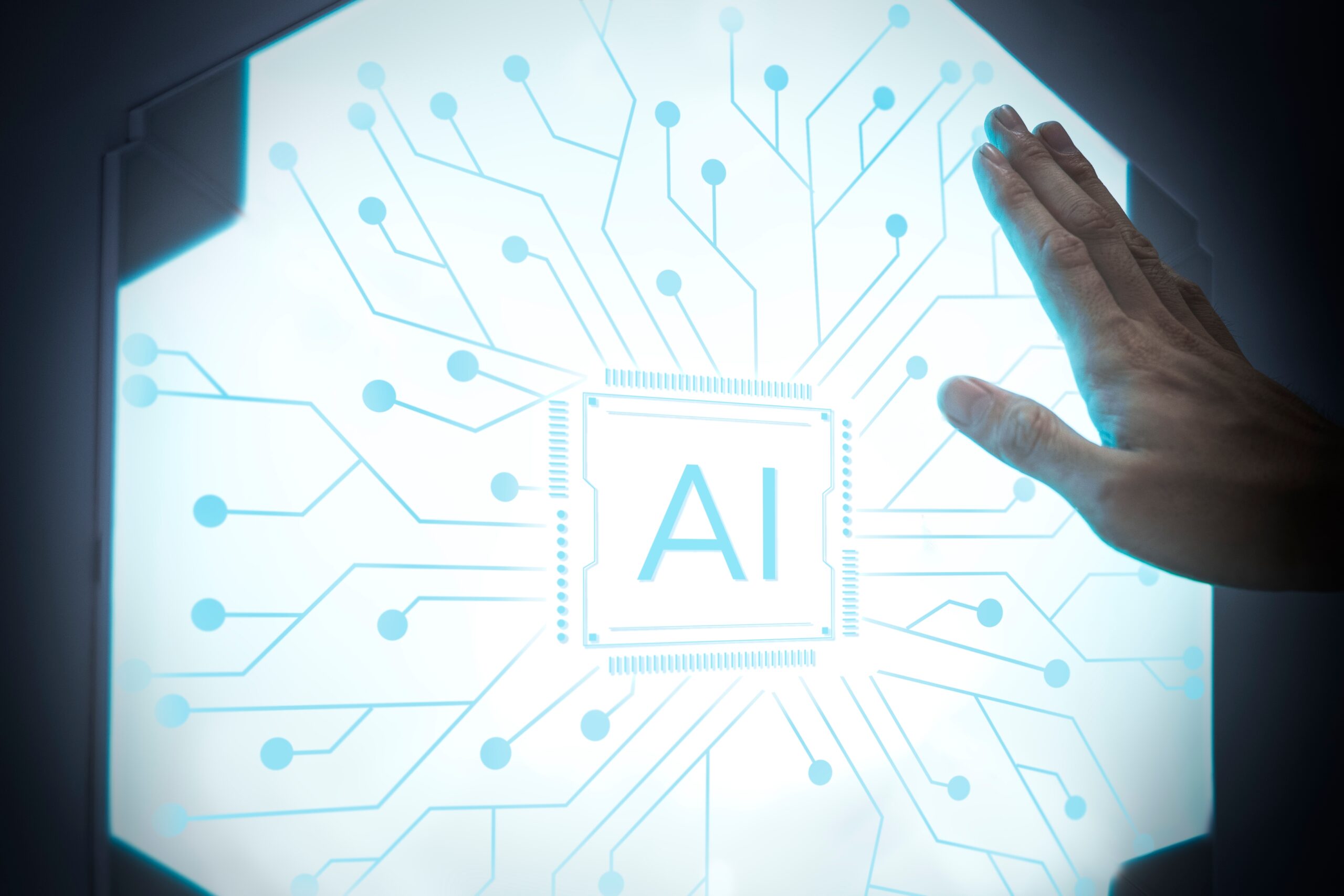How Agentic AI is Changing Localization – Meet the New Kid on the Localization Block
Let’s face it, localization ain’t what it used to be. The game’s changing fast, and leading the charge is something called Agentic AI, a new breed of artificial intelligence that doesn’t just follow commands, it takes the wheel. We’re talking about AI that plans, decides, and acts on its own, like a project manager with zero coffee breaks.
From e-commerce giants to indie app developers, businesses everywhere are waking up to the power of AI-powered localization. But this isn’t your grandma’s translation bot. This is Agentic AI in localization, tech that can adapt tone, juggle deadlines, run QA checks, and even flag cultural red flags without being micromanaged.
So what does that mean for the future of AI translation and localization solutions? And more importantly, what does it mean for you?
In this post, we’re diving into how AI is changing localization — what’s new, what’s next, and how you can stay ahead of the curve in a world where machines aren’t just helping with translation… they’re practically running the show.
What Is Agentic AI, Anyway?
Okay, let’s break it down. You’ve probably used AI before, maybe to translate a quick paragraph or polish up some copy. That’s your typical task-based AI. It’s smart, but only when you tell it exactly what to do. Think of it like a super helpful assistant who won’t lift a finger unless you hand them a to-do list.
Agentic AI, though? Whole different vibe.
This isn’t just software that responds to commands—it’s AI with agency. It can set goals, make decisions, and carry out entire tasks without constant babysitting. It’s like giving your localization projects to a digital project manager who never sleeps and knows exactly what needs to be done. That’s the magic behind Agentic AI in localization.
Tools like AutoGPT, Devin, and other autonomous AI agents are already making waves. These aren’t just glorified chatbots, they’re systems that can research, plan, write, test, and optimize. In the world of AI-powered localization, this means an agent can detect content needing translation, pick the best tone and style based on audience, adapt cultural references, run QA checks, and deliver everything ready-to-go. No hand-holding required.
So when we talk about how AI is changing localization, we’re not just talking faster translations, we’re talking full-on automation of the entire workflow. And that’s where the real shift happens.
If you’re still thinking of AI as just a translation tool, it’s time to zoom out. AI translation and localization solutions are evolving fast and the agentic era is already here.

Why Traditional Localization Feels Like Dial-Up in a 5G World?
Let’s be real, localization has always been a bit of a grind. Juggling spreadsheets, chasing down translators across time zones, waiting on reviews, QA, edits… rinse and repeat. When you’re handling content at scale, those old-school methods start to crack under pressure.
Human bottlenecks? Oh yeah. Even the best project managers can only do so much when you’re localizing thousands of product descriptions, legal docs, or marketing campaigns into 15+ languages. It’s like trying to run a marathon in flip-flops.
And let’s not forget the limitations of those trusty-but-tired translation memories and rule-based systems. Sure, they’ve saved time in the past, but they don’t adapt. They can’t shift tone for Gen Z TikTokers in Brazil one minute and nail corporate legal speak for Germany the next. That kind of contextual agility is out of their league.
Then there’s the holy trinity of pain points: cultural nuance, quality assurance, and turnaround time. You can’t rush nuance, but clients still want it done yesterday. And don’t even get us started on the QA loop, by the time feedback gets processed and changes are made, the campaign’s already out of date.
This is exactly where Agentic AI in localization flips the script.
With AI-powered localization, we’re not just speeding things up, we’re smashing bottlenecks, adapting on the fly, and handling quality checks in real time. This is how AI is changing localization: turning slow, manual workflows into smooth, scalable operations.
Because let’s face it, AI translation and localization solutions aren’t the future. They’re already here. And the old way? It’s quickly becoming obsolete.
How Agentic AI is Changing the Game?
Let’s cut to the chase: Agentic AI isn’t just helping with localization, it’s running the show. It’s like giving your translation process a turbo boost and a brain. The days of clicking through endless checklists and micromanaging every step? Over.
Here’s how Agentic AI in localization is flipping the script and making the old way look like dial-up.
Autonomous Workflow Management: Set It and Forget It
Remember when launching a localization project meant setting up files, chasing vendors, tracking progress, and praying nothing got lost in the email abyss? Yeah, Agentic AI laughs at that chaos.
Now, AI agents can spin up a project, assign the right linguists (or fire up machine translation), schedule QA, route edits, and ship it, all on autopilot. It’s like having a localization PM who works 24/7 and never misses a deadline.
This is what AI-powered localization looks like: smooth, smart, and fully self-driven.
Dynamic Adaptation to Context: One Voice, Many Vibes
Your audience in Tokyo doesn’t talk like your users in Toronto, and Agentic AI gets that. It doesn’t just translate words, it adapts tone, style, and context based on where, how, and who the message is for.
Casual for social media? Formal for legal docs? Techy for developer guides? No problem. Agentic AI can flip between voices like a multilingual chameleon. That’s next-level AI translation and localization solutions in action.
Proactive Quality Assurance: Built-In Peace of Mind
No more “Oops, we missed a typo” emails. Agentic AI spots inconsistencies, cultural no-nos, formatting flubs, and untranslated strings before you even hit send.
It’s like having QA baked into the entire process, not tacked on at the end. This is how AI is changing localization: fixing things before they become problems, not after.
Localization at Scale: Big Volume, No Sweat
Got 10,000 product descriptions in 12 languages? Bring it on. With minimal oversight, Agentic AI can handle massive multilingual rollouts at lightning speed. No burnout. No bottlenecks.
Whether you’re launching globally or scaling fast, Agentic AI in localization means your team can go big without burning out.

Risks & Red Flags: Don’t Hand Over the Keys Just Yet
Alright, before we all bow down to our new AI overlords, let’s pump the brakes for a sec. As game-changing as Agentic AI in localization is, it’s not all smooth sailing. There are still a few potholes on the road to fully autonomous translation bliss, and ignoring them could cost you big time.
Let’s get into the real talk.
Culture Clashes: Lost in (Machine) Translation
AI’s smart, but it’s not that smart. If it’s not tuned right, it can totally miss the mark on local customs, slang, humor, or taboo topics. One poorly localized joke or awkward phrasing, and boom, you’ve alienated your audience.
AI-powered localization still needs cultural sensitivity. If your AI thinks sarcasm works the same in Seoul and Seattle… you’re gonna have a bad time.
Who’s on the Hook? Accountability Ain’t Automated
Here’s a spicy one: when AI screws up, who takes the blame?
An AI agent might make decisions autonomously, but when it outputs the wrong date, mistranslates legal content, or skips a whole section, your brand is still holding the bag. Ethics, compliance, liability, those don’t go away just because the bot hit “submit.”
This is one of the biggest gaps in AI translation and localization solutions today: smart tools, but fuzzy lines of accountability.
Tech Headaches: Not All TMS Play Nice
Trying to plug Agentic AI into an existing TMS can feel like forcing a square peg into a round hole. Legacy systems aren’t always ready to vibe with autonomous agents, which means you might hit snags with data sync, version control, or workflow compatibility.
Before going all-in on how AI is changing localization, make sure your tools are actually ready to play nice with each other.
Human-in-the-Loop: Still Non-Negotiable (For Now)
Look, AI is powerful, but you still need a human touch, especially for high-stakes content. Legal docs, medical translations, anything with emotional nuance or cultural depth? You’ll want a real set of eyes on that.
The best AI-powered localization setups keep humans in the loop, not out of the picture.
So yeah, Agentic AI is a beast, but it’s not bulletproof. Treat it like a partner, not a miracle worker. With the right checks and balances, it can supercharge your localization … just don’t toss the humans out too fast.

The Human + AI Dream Team: Not Man vs. Machine
Let’s squash the panic right now: AI isn’t here to steal your job, it’s here to make it less soul-crushing.
The future of localization? It’s not some robot apocalypse where linguists get replaced by lines of code. It’s a tag-team match: humans and AI, working together to deliver faster, smarter, culturally on-point content at scale.
Here’s the vibe: Agentic AI in localization handles the grunt work; project setup, repetitive tasks, QA sweeps, content routing. That frees up humans to do what machines still can’t: catch emotional nuance, polish tone, and make sure that clever wordplay actually lands across cultures.
AI-powered localization isn’t about replacing linguists, it’s about elevating them. Think of AI as your supercharged sidekick that lets you focus on the good stuff while it takes care of the tedious bits in the background.
But that also means one thing: it’s time to level up.
Linguists, PMs, and localization experts will need to sharpen new skills, like training AI, fine-tuning prompts, managing automated pipelines, and QA’ing at scale. The roles are shifting, but they’re not disappearing. In fact, they’re getting more strategic, more creative, and more valuable than ever.
This is how AI is changing localization, not by cutting people out, but by giving them the tools to go further, faster, and smarter.
So no, the robots aren’t taking over. But if you work with them? You just might take over the industry.
What’s Next? Future Trends in AI-Powered Localization
So, we’ve seen how Agentic AI in localization is already flipping the industry on its head, but what’s coming down the pipeline? Spoiler alert: it’s about to get even wilder.
Here’s a peek at where the future’s headed, and how the smartest brands will stay ahead of the curve.
Multimodal AI: Visuals and Voice, Not Just Text
Text is just the beginning. The next-gen wave of AI translation and localization solutions will be multimodal, meaning they can handle images, audio, and video too.
Think AI that can localize product tutorials, ads, and training videos in one go, syncing subtitles, dubbing voices, and even swapping out visuals to fit local cultures. From TikToks to training decks, AI-powered localization is about to get a whole lot more immersive.
Hyper-Personalization: Micro-Markets, Macro Impact
Forget one-size-fits-all. With smarter data and more agile agents, AI will start tailoring content for micro-markets, dialects, regions, and even subcultures.
Imagine launch campaigns personalized for 20 different Spanish-speaking regions, without the overhead. That’s how AI is changing localization: turning mass communication into a hyper-personal connection.
Predictive Localization: Translate Before You Even Ask
Here’s where things get really next-level, Agentic AI that doesn’t just react, it predicts.
By analyzing past launches, market trends, and user behavior, AI will start flagging content that needs localization before your team even thinks to ask. Like, “Hey, you’re expanding to Korea next quarter, wanna get ahead of that content now?”
Localization just went from reactive to proactive.
Human + AI = The New Localization Team
We said it before, and we’ll say it again: the future isn’t man or machine, it’s both.
Expect to see more human-AI hybrid teams, where linguists guide, verify, and fine-tune what agentic systems generate. PMs become AI strategists. Translators evolve into localization consultants. The whole industry levels up and fast.
The localization field is shifting fast. If you’re still clinging to spreadsheets and static workflows, you’re already behind. But if you’re ready to embrace the next-gen, AI-driven future? You’re exactly where you need to be.
Conclusion: The Future’s Here, Are You Ready to Localize Like a Pro?
From smashing bottlenecks to scaling global content like never before, Agentic AI is rewriting the rules of the localization game. We’re not just talking faster translations, we’re talking smarter, autonomous systems that manage workflows, adapt to cultural nuance, and deliver at a pace and scale that was unthinkable just a few years ago.
This is the era of AI-powered localization, and it’s only getting started.
But here’s the catch: technology alone isn’t the full story. You need the right partner to make it work for your brand, your voice, and your global goals. That’s where Europe Localize comes in.
We’re not just keeping up with how AI is changing localization, we’re helping lead the charge. Our team blends cutting-edge AI translation and localization solutions with deep human expertise to give you results that are fast, flawless, and future-proof.
So, the big question now is: How will your organization adapt to the AI-localization era?
If you’re ready to work smarter, scale faster, and go global like never before, hire Europe Localize. Let’s build the future of localization, together.



